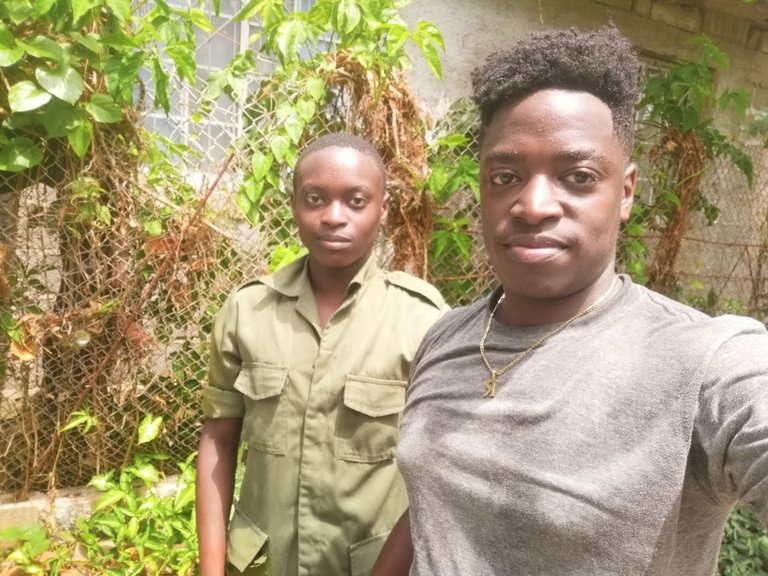
Greetings to the community. Since I was little, my grandparents used to take me and my brother to their country house, where we had various plants and crops. At that time I did not pay attention to this, I entertained myself watching the river or playing with the boys in the area. Today this has changed, at the moment I am the one who takes care of the house and its crops. In future posts I will share with you the fruits and vegetables I have.
In this post I am going to tell you about a pest that appeared in the house and that I thought would be fatal: the giant African snail. Since Cuba made official the presence of this mollusk in the country I have lived in fear that they would appear in the house. It should be added that since I was a child slugs and snails disgusted me tremendously. One day while I was contemplating the garden of the house I came across the first one, I couldn't believe it. I spent a few minutes analyzing whether I should squash it, bury it or take it away and disappear. After thinking about it, I wrapped it in a newspaper, I crushed it, so as not to see it (remember that mollusks disgust me) and finally I left it in a garbage can. This meticulous process I was doing with 3 or 4 more snails.
One day I decided to change the method of elimination because the pest was definitely going to keep making appearances. I took a bucket that had lime in it, poured water in it and started stirring the mixture until it was quite homogeneous. Then I separated some in a smaller bucket and since that day the giant African snail that I find goes to the lime well, as I like to call it.

I know that this mollusk is very resistant and reproduces quite fast. For this reason, since I saw the first one, I took on the task of carefully observing the land, from the garden, the side aisles of the house and the backyard to eradicate them as soon as possible. Every time I go there I do a search and try to have the land as clean as possible. I find a snail every two or three weeks, so there are not many left. One day I alerted the nearest neighbor of the existence of this pest in the house, since her yard borders mine. That same day she casually called me because inside some construction parts she had a very large snail but I wasn't sure if it was the African giant. I crossed the fence that divides our land and went to check it out. My neighbor was very astonished because she had never seen one before. I explained to her the ways of elimination that exist and the one I use. I left her some lime so that she can eliminate them herself and since then we inform each other of the sightings we make, which are not very frequent.
While I was making this publication I found other snails to which I made the following photo session📸.
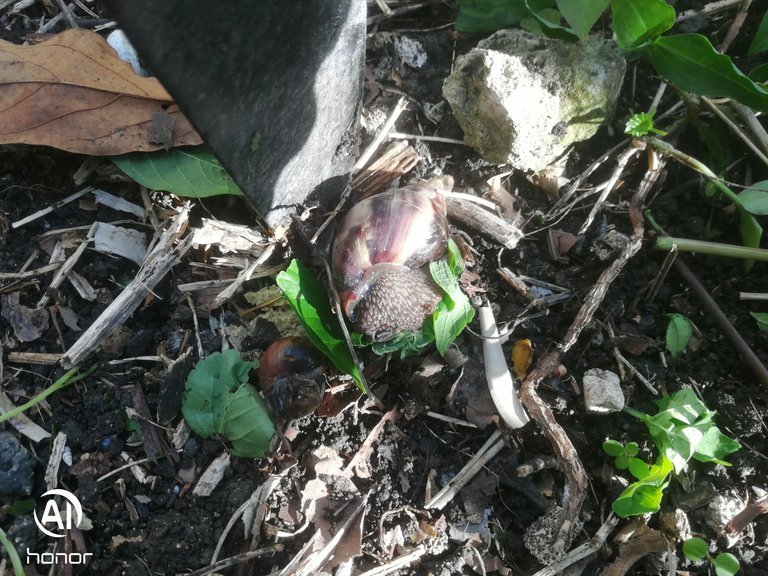
When I touched them with the machete they hid in their shells.
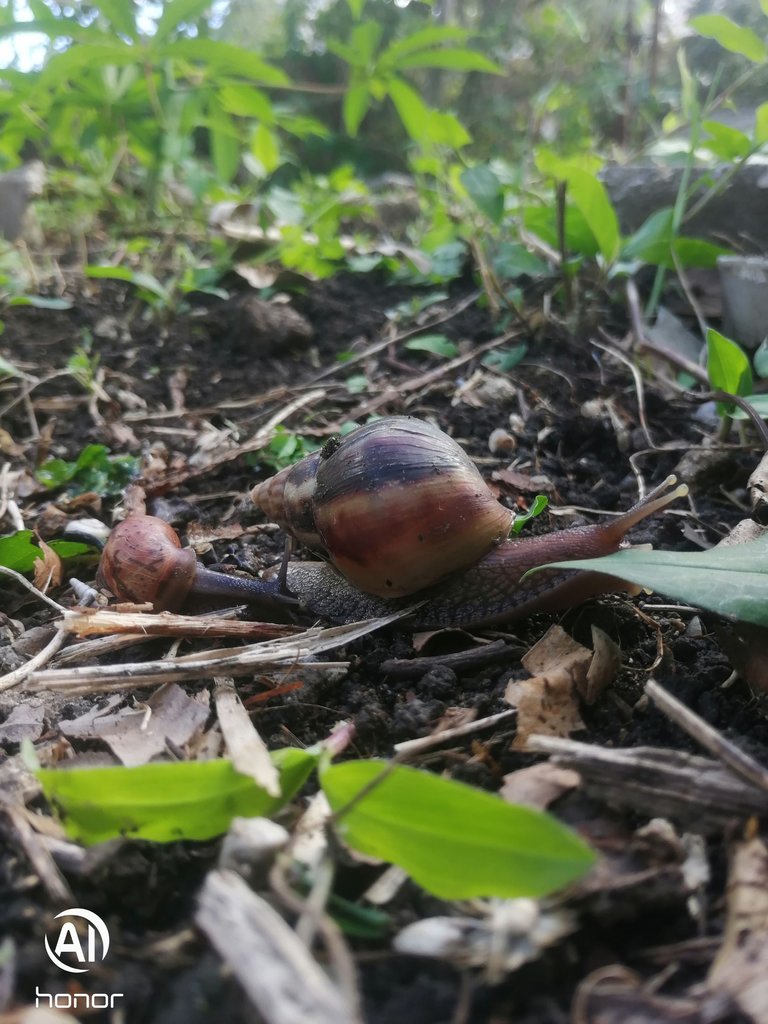
I waited for them to feel confident and come out again. In the background of this image you can see a yucca plant from the garden.
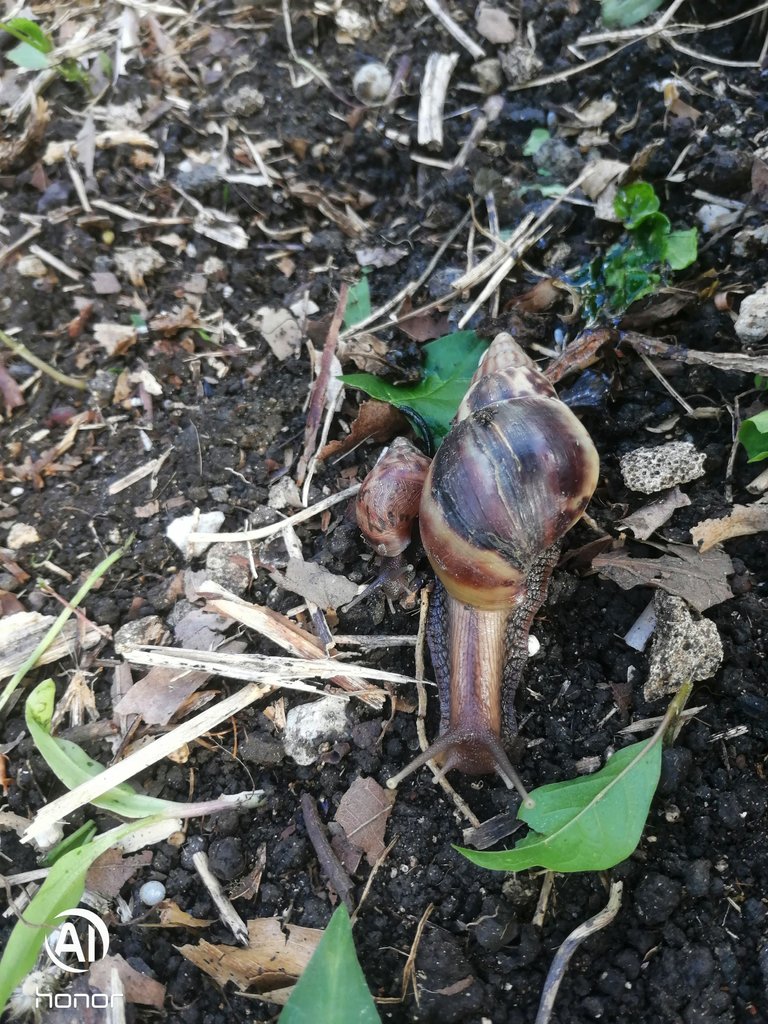
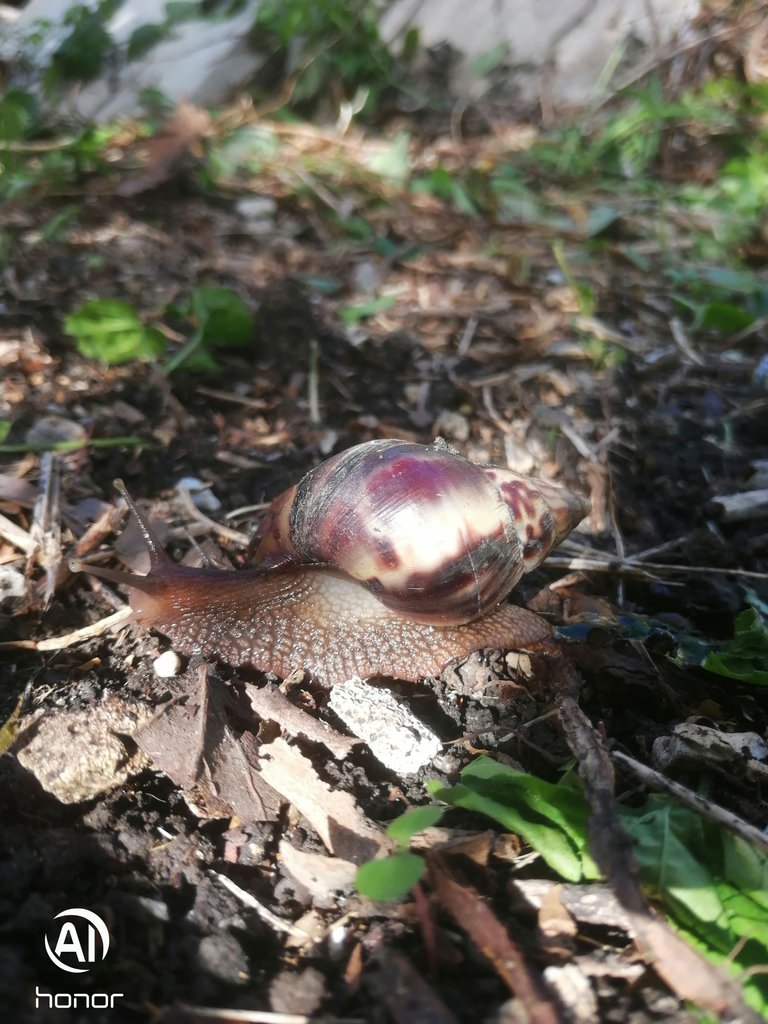
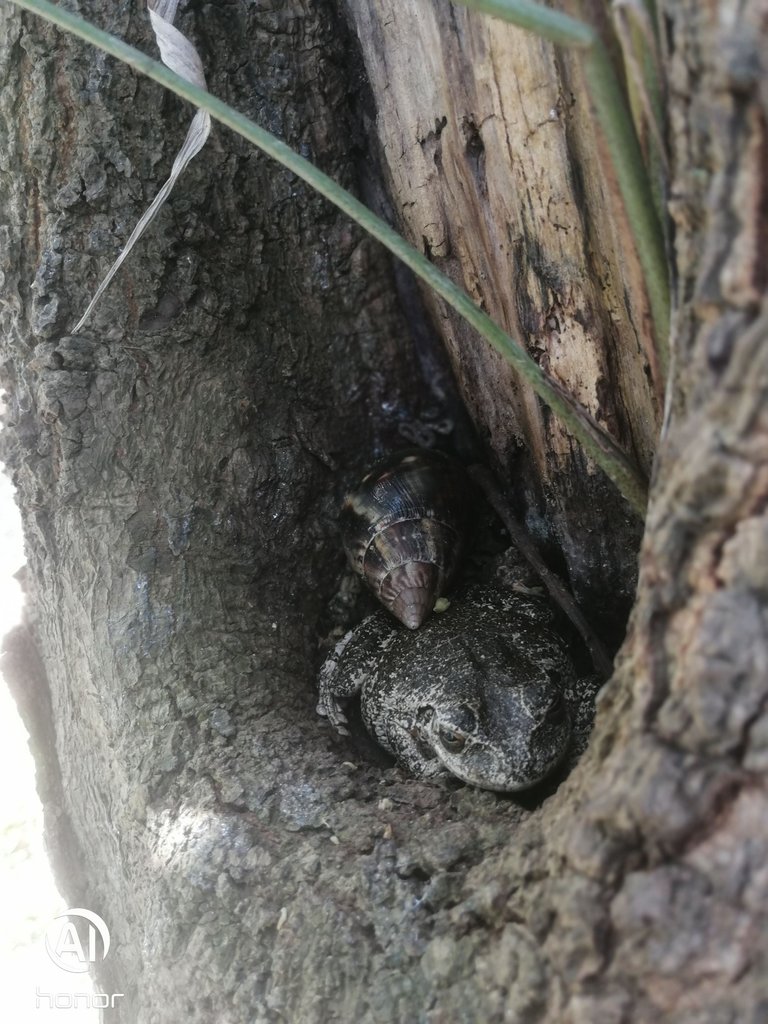
See how the snail shares space with a toad due to the humidity in the trunk of this tree.
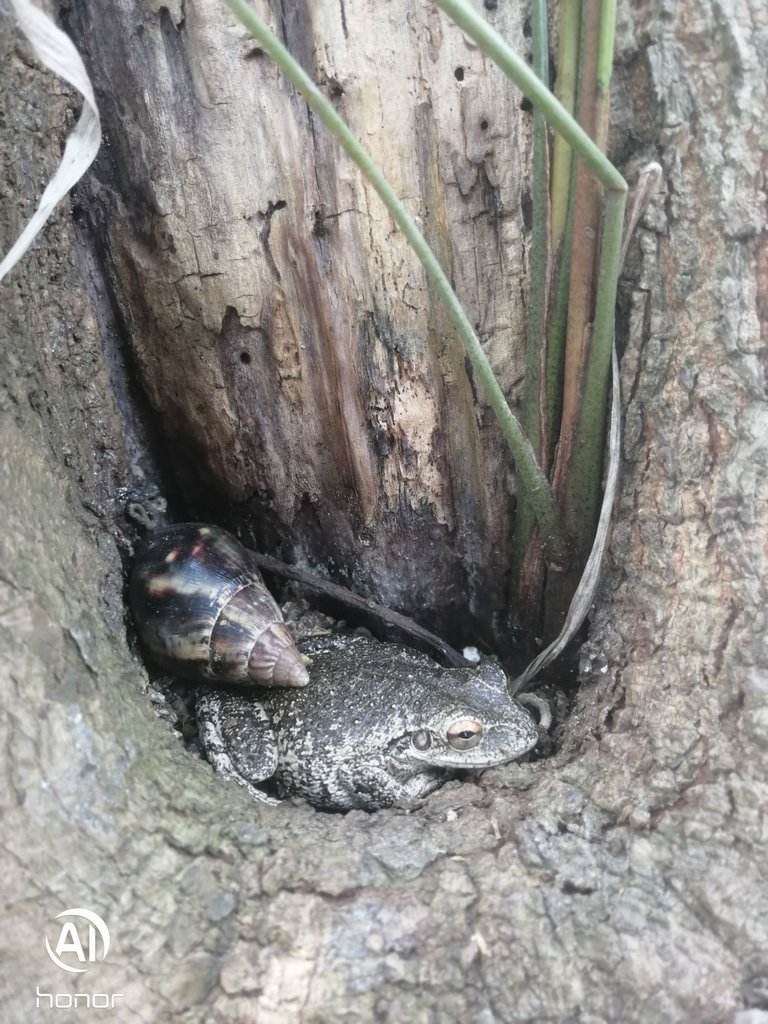
How did the snails get on my land, did someone carry them intentionally or unknowingly, did the river water wash them away when it overflows due to the rains?
I ask myself these questions repeatedly, although it would be very difficult to determine the way the mollusks arrived. Besides, other communities in Havana had already reported their presence, so one way or another it had to touch me.These animals can get stuck to a vehicle and be carried long distances, so I just have to deal with the situation. As the fruits of the farmhouse are moved to my parents' house, I always check that there are no unwanted guests hiding in a bunch of bananas or attached to some yuccas. It would be a pity if African snails also appeared in my mother's garden.
Due to the various crises that Cuba has gone through, Cubans have innovated in order to feed themselves. With the arrival of the snail some people have thought of cooking them and adding them to the menu. Here is a link to the video in which a Cuban explains how to clean, cook and consume the giant African snail.
To limit the area of action of the mollusks I have painted the paths through the garden with lime.
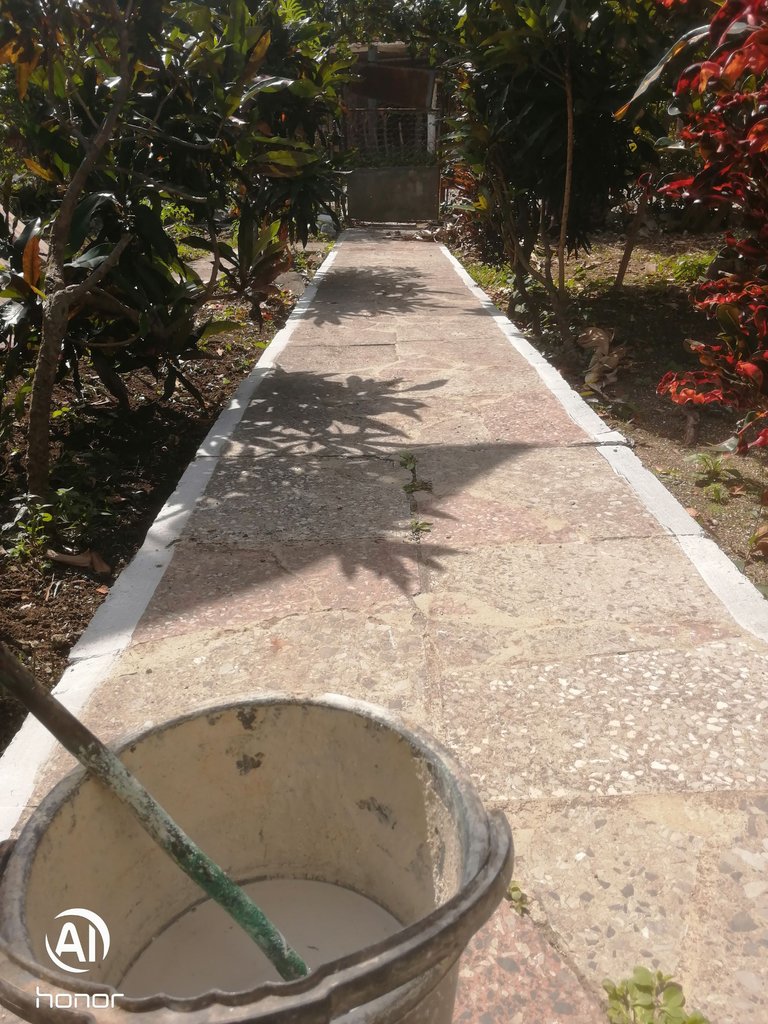
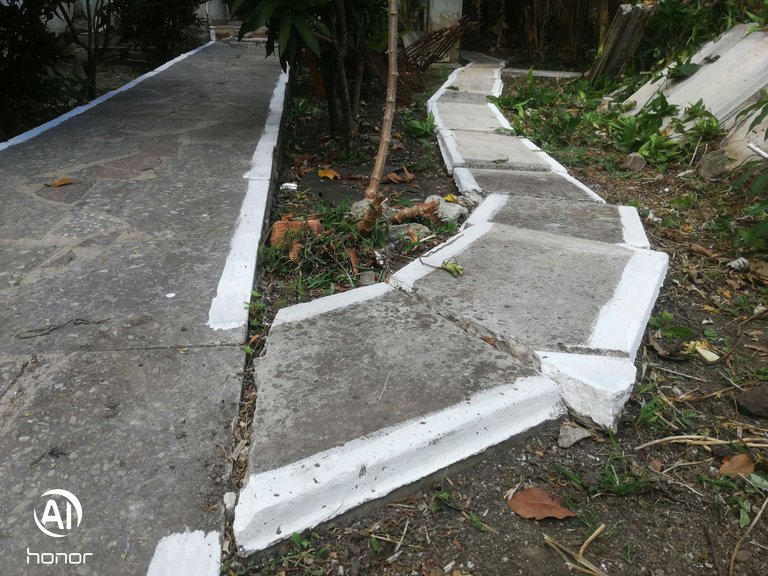
In closing I would like to leave this community with the link to this site which addresses the risks this species poses to us humans and to our garden in general. Has anyone else in the community had experiences battling this pest?
Thanks for reading.
All photos are my own and were taken with my Huawei Honor 8X.
Translated with DeepL.com (free version)
Versión en Español

Saludos a la comunidad. Desde pequeños, mis abuelos me llevaban junto con mi hermano a su casa de campo, en la teníamos diversas plantas y cultivos. En aquel entonces no le prestaba atención a esto, me entretenía mirando el río o jugando con los muchachos de la zona. Hoy esto ha cambiado, en estos momento soy yo quien cuida dicha casa y sus sembrados. En futuros post les iré compartiendo las frutas y verduras que tengo.
En esta publicación vengo a hablarles de una plaga que apareció en la casa y que pensé sería funesta: el caracol gigante africano. Desde que Cuba hizo oficial la presencia de este molusco en el país he vivido con el temor de que aparecieran en la casa. Hay que agregar que desde que era un niño las babosas y los caracoles me daban un asco tremendo. Un día mientras estoy contemplando el jardín de la casa me topé al primero, no me lo podía creer. Me pasé unos minutos analizando si debía aplastarlo, enterrarlo o llevármelo y desaparecerlo. Después de pensar lo envolví en un periódico, lo escaché, para de esa forma no verlo (recuerden que me dan asco los moluscos) y finalmente lo dejé en un basurero. Ese meticuloso proceso lo estuve haciendo con 3 o 4 caracoles más.
Un día me propuse cambiar el método de eliminación porque definitivamente la plaga iba a seguir haciendo sus apariciones. Cogí un cubo que tenía cal, le eché agua y comencé remover la mezcla hasta que quedó bastante homogénea. Luego separé un poco en un cubito más pequeño y desde ese día el caracol gigante africano que me encuentro va para el pozo de cal,como me gusta llamarlo.

Se que este molusco es muy resistente y se reproduce bastante rápido. Por esta razón desde que vi al primero me di a la tarea de observar con detenimiento el terreno, desde el jardín, los pasillos laterales de la casa y el patio trasero para erradicarlos lo más pronto posible. Cada vez que voy hago una búsqueda y trato de tener el terreno lo más limpio posible. Me encuentro un caracol cada dos o tres semanas, así que no quedan muchos. Un día alerté a la vecina más cercana de la existencia de esta plaga en la casa, ya que su patio limita con el mio. Ese mismo día casualmente me llamó porque dentro de unas piezas de construcción tenía un caracol grandísimo pero no estaba segura de que fuera el gigante africano. Crucé la cerca que divide nuestros terrenos y fui a comprobarlo. Efectivamente se trataba de este caracol, mi vecina quedó muy asombrada porque nunca había visto uno. Le explique las formas de eliminación que existen y la que yo utilizo. Le dejé un poco de cal para que pueda eliminarlos ella misma y desde entonces nos informamos mutuamente los avistamientos que hacemos, que no son muy frecuentes.
Mientras confeccionaba esta publicación encontré otros caracoles a los que les realicé la siguiente sesión📸 de fotos

Cuando los toqué con el machete se escondieron en su concha

Esperé a que sintieran confianza y salieran nuevamente. En el fondo de esta imagen pueden ver una planta de yuca del jardín



Vean como el caracol comparte el espacio con un sapo debido a la humedad que alberga el tronco de este árbol.

¿Cómo llegaron los caracoles a mi terreno?¿Alguien los llevó intencionalmente o sin percatarse?¿Los habrá arrastrado el agua del río cuando se desborda por las lluvias?
Estas preguntas me las hago reiteradamente aunque sería muy difícil determinar la vía de llegada de los moluscos. Además ya otras comunidades de La Habana habían reportado su presencia, así que de una u otra forma me tenía que tocar. Estos animales se pueden quedar adheridos a un vehículo y ser trasladados grandes distancias, solo queda hacerle frente a la situación. Como los frutos de la casa de campo se trasladan hacia la casa de mis padres, chequeo siempre que no haya ningún huésped no deseado escondido en un racimo de plátanos o adherido a unas yucas. Sería una pena que en el jardín de mi mamá también aparecieran caracoles africanos.
Debido a las diversas crisis que Cuba ha atravesado las cubanas y cubanos hemos innovado para podernos alimentar. Con la llegada del caracol algunas personas han pensado en cocinarlos y agregarlos al menú. Aquí les dejo un enlace del video en que un cubano explica cómo limpiar, cocinar y consumir el caracol gigante africano.
Para limitar el área de acción de los moluscos he pintado con cal los caminos que atraviesan el jardín.


Para finalizar me gustaría dejarle a esta comunidad el enlace de este sitio en el cuál se abordan los riegos que representa esta especie para nosotros los humanos y para nuestro jardín en general. ¿Alguien más en la comunidad ha tenido experiencias luchando contra esta plaga?
Gracias por leer.
Todas las fotos son de mi propiedad y fueron realizadas con mi Huawei Honor 8X.
Traducido con DeepL.com (free version)